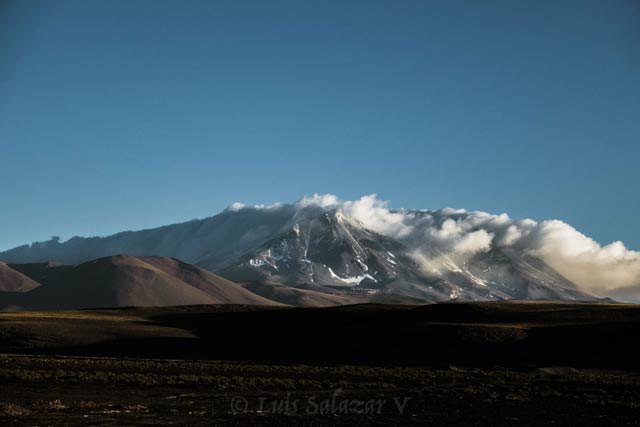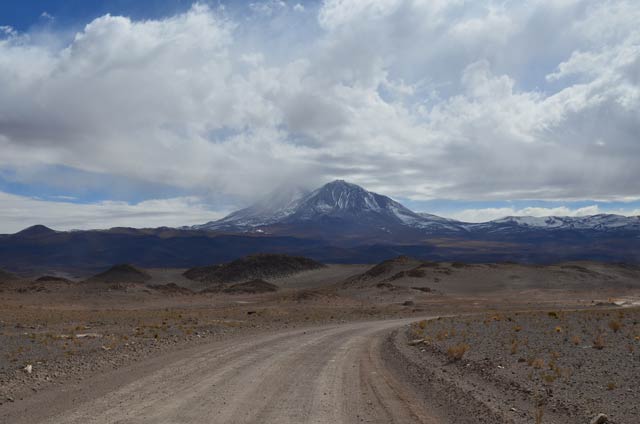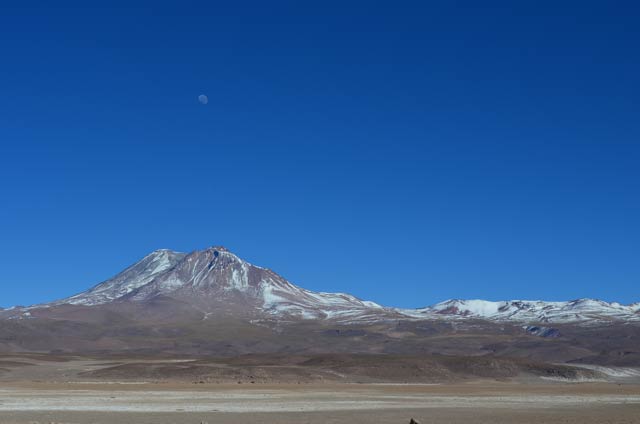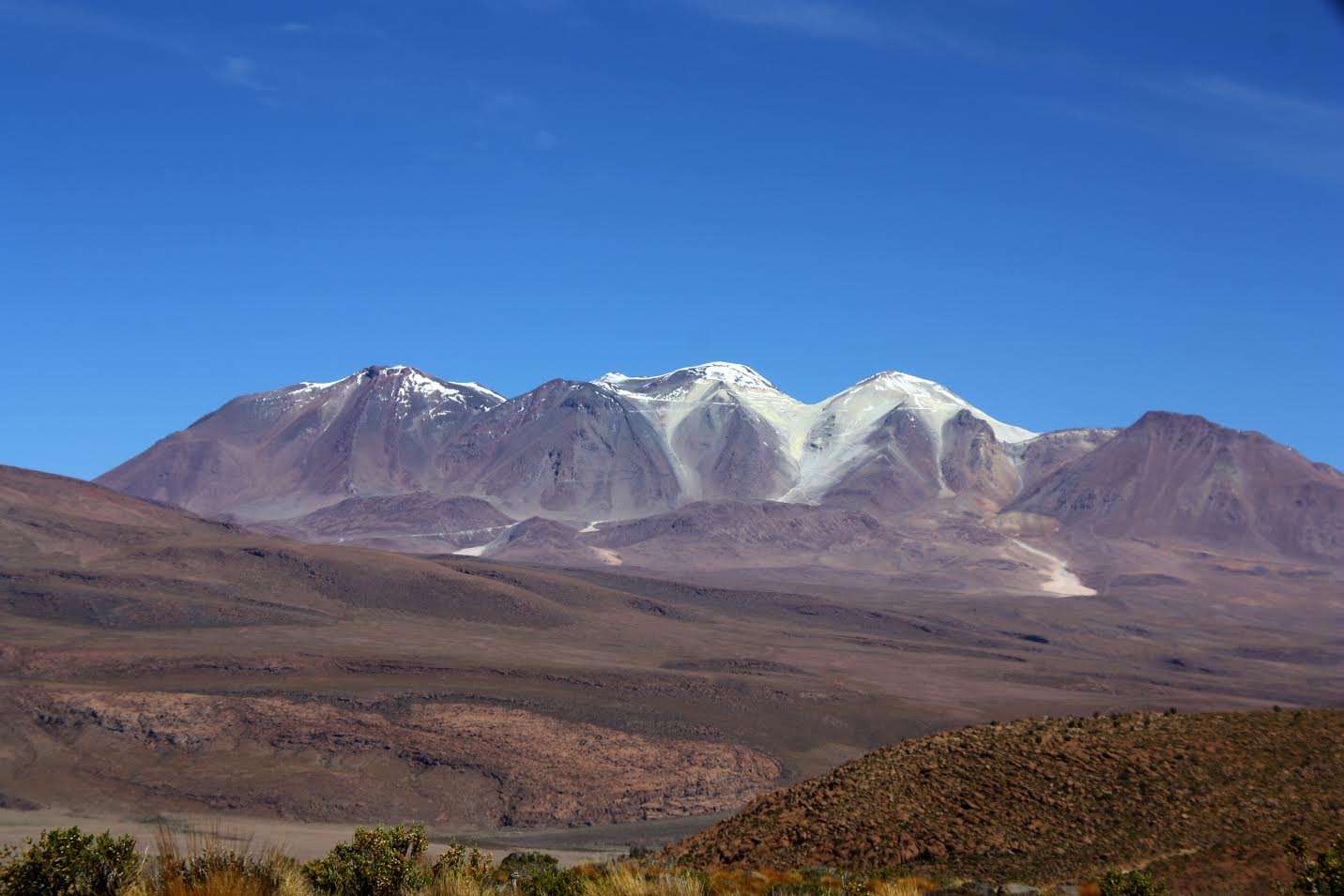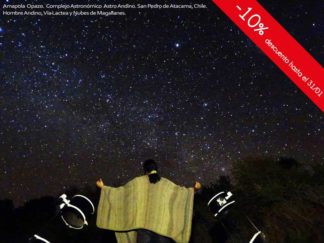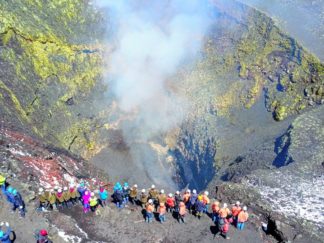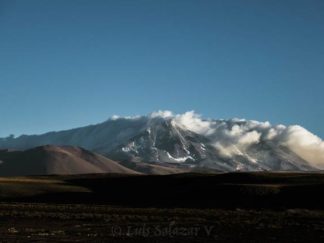Description
Introduction
Ascent Volcan Aucanquilcha is part of the select group of Chilean mountains above 6000m and corresponds to a volcanic complex of the lavas domes and pyroclastic type and which is located to the northeast of the Alto El Loa National Reserve within the Antofagasta Region, and near 20km west of the town of Ollagüe.
It is formed by a set of four main summits oriented in a west-east direction with an extension of length close to 10km, of which three have an altitude above 6000m and the main one being in the third position from the west and whose peak reaches 6176m. On the south face of the massif, ice formations and moraines stand out (the latter near the 4600m elevation).
It is characterized for being an active volcanic complex, from which permanent sulphurous fumaroles are detached and this is how Sernageomin qualifies it as 72th in the ranking of 90 active volcanoes in Chile.
Sports Ascension
The normal ascension route to the Aucanquilcha consists of a vehicle approaching close to 26km starting from Ollagüe through a secondary road that goes west to the town of Amincha (former Quechua town and transfer station of the sulfur mine). located at 3850m), then continue on a disused mining road to reach the abandoned facilities of the camp Aucanquilcha so that in the stage of ascent as such faces the north face of the hill through a route that runs largely following the layout of the old mining road to about 5900m and finally to reach the summit by sectors of frozen sulfur.
Place names
In certain literature it is indicated that the Aucanquilcha is the “hill of the Devil”, meaning that can be interpreted with the popular belief of relating the sulfur with the diabolic and considering that in the Aymara language, aukka, means demon. However, in the latter there is no direct correspondence with cerro (kullu).
On the other hand, according to M. Fernández, the word probably derives from the Quechua language, since auqa (or aukka) means cruel or enemy, and kichka (or khiska) means thorn, “cruel thorn”.
Quechua Cosmovision
The Aucanquilcha is present in the culture of the Quechua people and its tripartite worldview of the world (sacred hill, mother earth and water courses) and Octavia Mendoza, a native of Ollagüe and 70 years old, declares that “payments” are made and offerings to the hill where the ancestors live and they should be thanked for the riches they give (reference: “Quechua”):
“That’s Santa Rosa, that’s Aucanquilcha, and that next there, San Pedro. Sulfur people worked there (sic), and that is why one “esteems” the hill. One pays the mallku, it is called (sic). The Santa Rosa is a woman, and the “Quilcha” is a male mallku. Then they pay him once a year, in August. The apus are the hills, they are the spirits. These spirits are, like being, the aviators, who give work, money, everything. It’s like a person, but in air. Mallku is called, the ancestor. ”
(N. of the R .: Santa Rosa corresponds to the Ollagüe volcano).
The above denotes a deep admiration and tribute to the hill as a protective deity and source of work, and the Aucanquilcha is such in its figure of male spirit of sacred hill.
√ Includes: Professional mountain guide, transportation in 4Runner SR5, all meals and beverages, group equipment (First Aid, Medical Oxygen 0.4 liters, evacuation equipment, communication system, guidance system, trekking poles, helmets, camps, shelters, tickets to parks and reserves.
Ø Restrictions: Passengers acclimatized with at least 2 departures over 4,000 meters above sea level in the days prior to the ascent, of physical condition compatible with the activity, bearers of personal equipment and basic clothing.
≡ Difficulty: Physics 4.5 | Technique 2.5 (scale from 0 to 10)
€ Price: $ 300,000 p / p. | Interesting discounts in groups of 5 or more!
⇒ Departure: 5:00 a.m.
↔ Duration: 2 full days
> Minimum: 2 people (Check Availability)
¢ Cancellation: Up to 24 hours before starting the Tour we will refund your reservation
If you have any questions, write to: hola@utu.travel
Team www.uTu.travel

